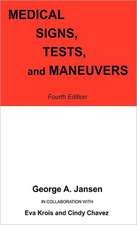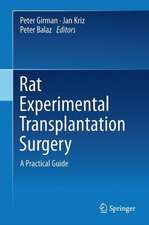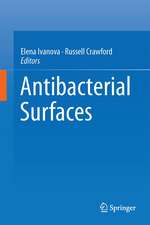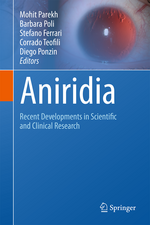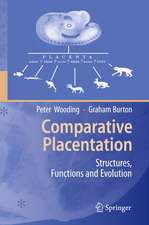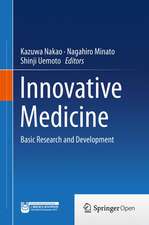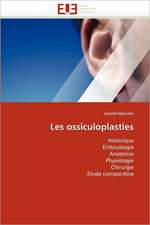Molecular Parameters Indicating Adaptation to Mechanical Stress in Fibrous Connective Tissue: Advances in Anatomy, Embryology and Cell Biology, cartea 178
Autor Stefan Milz, Michael Benjamin, Reinhard Putzen Limba Engleză Paperback – 8 iun 2005
Din seria Advances in Anatomy, Embryology and Cell Biology
- 5%
 Preț: 1146.33 lei
Preț: 1146.33 lei - 5%
 Preț: 721.19 lei
Preț: 721.19 lei - 15%
 Preț: 637.13 lei
Preț: 637.13 lei -
 Preț: 381.81 lei
Preț: 381.81 lei - 15%
 Preț: 644.95 lei
Preț: 644.95 lei - 5%
 Preț: 1025.16 lei
Preț: 1025.16 lei - 15%
 Preț: 689.97 lei
Preț: 689.97 lei - 15%
 Preț: 577.07 lei
Preț: 577.07 lei - 15%
 Preț: 580.36 lei
Preț: 580.36 lei - 5%
 Preț: 393.51 lei
Preț: 393.51 lei -
 Preț: 408.66 lei
Preț: 408.66 lei -
![Die Schlüpfdrüse der Geburtshelferkröte (Alytes o. obstetricans [LAURENTI]) und anderer Froschlurche](https://i4.books-express.ro/bs/9783662239742/die-schluepfdruese-der-geburtshelferkroete-alytes-o-obstetricans-laurenti-und-anderer-froschlurche.jpg) Preț: 408.27 lei
Preț: 408.27 lei - 5%
 Preț: 1090.61 lei
Preț: 1090.61 lei - 5%
 Preț: 705.11 lei
Preț: 705.11 lei - 5%
 Preț: 706.04 lei
Preț: 706.04 lei - 5%
 Preț: 357.61 lei
Preț: 357.61 lei - 5%
 Preț: 704.59 lei
Preț: 704.59 lei - 5%
 Preț: 705.11 lei
Preț: 705.11 lei - 5%
 Preț: 359.42 lei
Preț: 359.42 lei - 5%
 Preț: 711.52 lei
Preț: 711.52 lei - 15%
 Preț: 635.47 lei
Preț: 635.47 lei - 15%
 Preț: 631.72 lei
Preț: 631.72 lei - 15%
 Preț: 633.35 lei
Preț: 633.35 lei - 15%
 Preț: 632.37 lei
Preț: 632.37 lei - 5%
 Preț: 706.60 lei
Preț: 706.60 lei - 15%
 Preț: 631.07 lei
Preț: 631.07 lei - 5%
 Preț: 707.13 lei
Preț: 707.13 lei - 5%
 Preț: 707.33 lei
Preț: 707.33 lei - 5%
 Preț: 359.60 lei
Preț: 359.60 lei - 5%
 Preț: 707.69 lei
Preț: 707.69 lei - 5%
 Preț: 707.13 lei
Preț: 707.13 lei - 5%
 Preț: 708.06 lei
Preț: 708.06 lei - 5%
 Preț: 706.41 lei
Preț: 706.41 lei - 5%
 Preț: 708.78 lei
Preț: 708.78 lei - 5%
 Preț: 705.68 lei
Preț: 705.68 lei - 5%
 Preț: 705.11 lei
Preț: 705.11 lei - 5%
 Preț: 706.77 lei
Preț: 706.77 lei - 15%
 Preț: 635.15 lei
Preț: 635.15 lei - 15%
 Preț: 631.07 lei
Preț: 631.07 lei - 5%
 Preț: 706.77 lei
Preț: 706.77 lei - 5%
 Preț: 706.04 lei
Preț: 706.04 lei - 5%
 Preț: 710.79 lei
Preț: 710.79 lei - 5%
 Preț: 705.32 lei
Preț: 705.32 lei - 15%
 Preț: 633.19 lei
Preț: 633.19 lei - 15%
 Preț: 629.09 lei
Preț: 629.09 lei - 15%
 Preț: 633.53 lei
Preț: 633.53 lei - 15%
 Preț: 632.70 lei
Preț: 632.70 lei - 15%
 Preț: 633.68 lei
Preț: 633.68 lei - 18%
 Preț: 773.72 lei
Preț: 773.72 lei - 15%
 Preț: 630.43 lei
Preț: 630.43 lei
Preț: 707.13 lei
Preț vechi: 744.35 lei
-5% Nou
Puncte Express: 1061
Preț estimativ în valută:
135.31€ • 144.69$ • 112.82£
135.31€ • 144.69$ • 112.82£
Carte tipărită la comandă
Livrare economică 18 aprilie-02 mai
Preluare comenzi: 021 569.72.76
Specificații
ISBN-13: 9783540244745
ISBN-10: 3540244743
Pagini: 84
Ilustrații: VI, 74 p.
Dimensiuni: 155 x 235 x 4 mm
Greutate: 0.2 kg
Ediția:2005
Editura: Springer Berlin, Heidelberg
Colecția Springer
Seria Advances in Anatomy, Embryology and Cell Biology
Locul publicării:Berlin, Heidelberg, Germany
ISBN-10: 3540244743
Pagini: 84
Ilustrații: VI, 74 p.
Dimensiuni: 155 x 235 x 4 mm
Greutate: 0.2 kg
Ediția:2005
Editura: Springer Berlin, Heidelberg
Colecția Springer
Seria Advances in Anatomy, Embryology and Cell Biology
Locul publicării:Berlin, Heidelberg, Germany
Public țintă
ResearchCuprins
Introduction: Preliminary remarks; Adaptation of connective and supportive tissues to their respective functions; Parameters of functional adaptation.- Study aim: Fundamental considerations; Structure of the present study; Questions.- Anatomical structures investigated: Extensor tendons of the toes in the region of the proximal interphalangeal joint (PIP); Extensor tendons of the hand in the region of the MCP joint; The transverse ligament of the atlas; The transverse ligament of the acetabulum; Tendon and trochlea of the superior oblique muscle.- Materials and methods: Materials; Methodology of the immunohistochemical investigation.- Results: Extensor tendons of the toes; Extensor tendons of the hand in the region of the MCP joint; The transverse ligament of the atlas.- Discussion: Discussion of the method; Discussion of the present study's structure; Discussion of results; Conclusions.- Summary.- Bibliography.- Subject Index.
Textul de pe ultima copertă
The present study pursues the hypothesis that local compressive force and the occurrence of cartilage-specific transformation processes within tendons and ligaments are directly correlated.
In selected anatomical samples of human origin the distribution pattern of certain components of the extracellular matrix is assessed. Investigations are carried out at the extensor tendons of toes and fingers, at the transverse ligament of the atlas, at the transverse ligament of the acetabulum, and at the tendon of the superior oblique muscle and its trochlea. The molecular components of the extracellular matrix are detected with standardized immunohistochemical methods.
The results show that certain molecules only occur due to compressive stress, others due to tensile stress. The molecular spectrum of the extracellular matrix allows qualifying conclusions to the mechanical situation of a given part of the tissue.
The spatial expansion of the fibrocartilaginous adaptation zones in tendons and ligaments roughly corresponds with the zones subjected to compressive force; tensile stress alone does not result in a production of fibrocartilage.
In selected anatomical samples of human origin the distribution pattern of certain components of the extracellular matrix is assessed. Investigations are carried out at the extensor tendons of toes and fingers, at the transverse ligament of the atlas, at the transverse ligament of the acetabulum, and at the tendon of the superior oblique muscle and its trochlea. The molecular components of the extracellular matrix are detected with standardized immunohistochemical methods.
The results show that certain molecules only occur due to compressive stress, others due to tensile stress. The molecular spectrum of the extracellular matrix allows qualifying conclusions to the mechanical situation of a given part of the tissue.
The spatial expansion of the fibrocartilaginous adaptation zones in tendons and ligaments roughly corresponds with the zones subjected to compressive force; tensile stress alone does not result in a production of fibrocartilage.




